Get PeakVisor App
Sign In
Search by GPS coordinates
- Latitude
- ° ' ''
- Longitude
- ° ' ''
- Units of Length
- Temperature

Yes
Cancel
Share ×

Scan the QR code and open PeakVisor on your phone
❤ Wishlist ×
Choose
Delete
Bjelašnica Ski Resort, also known as Babin Do Ski Resort or Babin Do-Bjelašnica, is the highest of more than 20 ski resorts in Bosnia and Herzegovina, one of the Balkan countries in southern Europe, which hosted the 1984 Winter Olympic Games in Sarajevo, the capital of the state. The main feature of the resort is the namesake Bjelašnica (2,067 m / 6,718 ft) mountain of the Dinaric Alps, which you can reach via chairlift from the base station at 1,267 m (4,156 ft), so the resort's maximum vertical drop is 800 m (2,624 ft). The resort is also the second-biggest in the country with more than 14 km (8.6 mi) of slopes and 9 ski lifts. It is best suited for intermediate skiers, but it also has some easy and advanced runs. The ski season lasts between mid-December and mid-March in general.
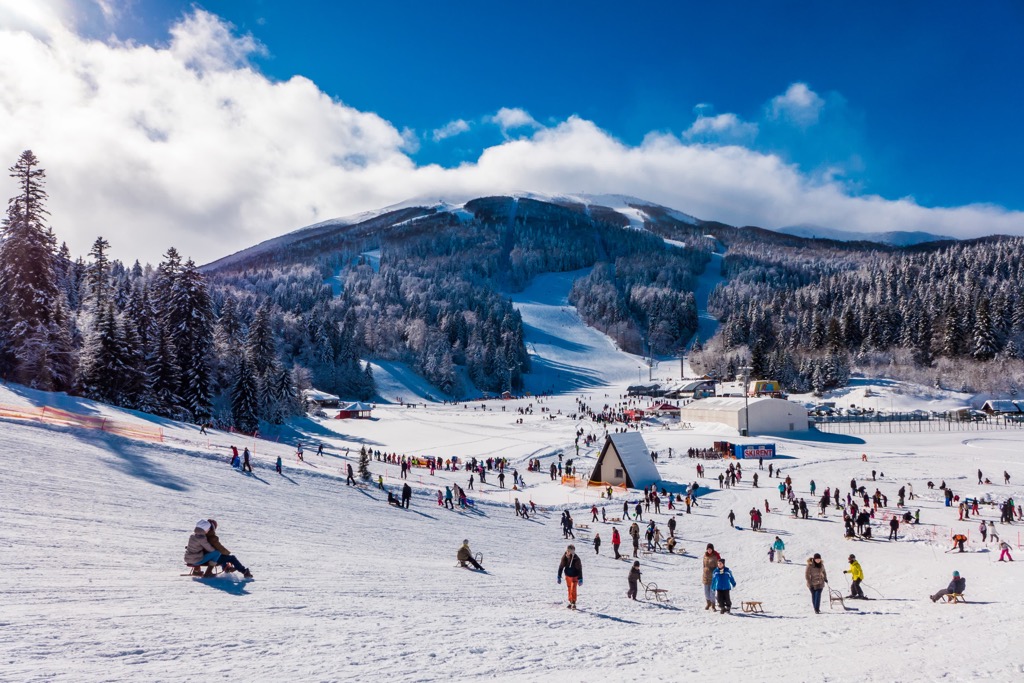
The Bjelašnica mountain, the name of which means "white", lies southwest to the city of Sarajevo and four smaller towns: Ilidža, Hadžići, Hrasnica, and Krupac — all in the canton of Sarajevo, part of the Federation of Bosnia and Herzegovina, on the border with the Republic of Srpska. These are two entities of the country, inhabited by ethnic Bosniaks and Croats, and Serbs, respectively.
Geographically, Bjelašnica is in the center of the country. It is part of the Dinaric Alps. The neighboring mountains include Jahorina (1,784 m / 5,853 ft), Visočica or Vito (1,960 m / 6,430 ft), Treskavica (2,020 m / 6,627 ft). Mala Ćaba or Đokin Toranj (2,088 m / 6,850 ft), and others.
The resort is also known under the name Babin Do or Babin Do-Bjelašnica since the base is located in the valley with the same name.
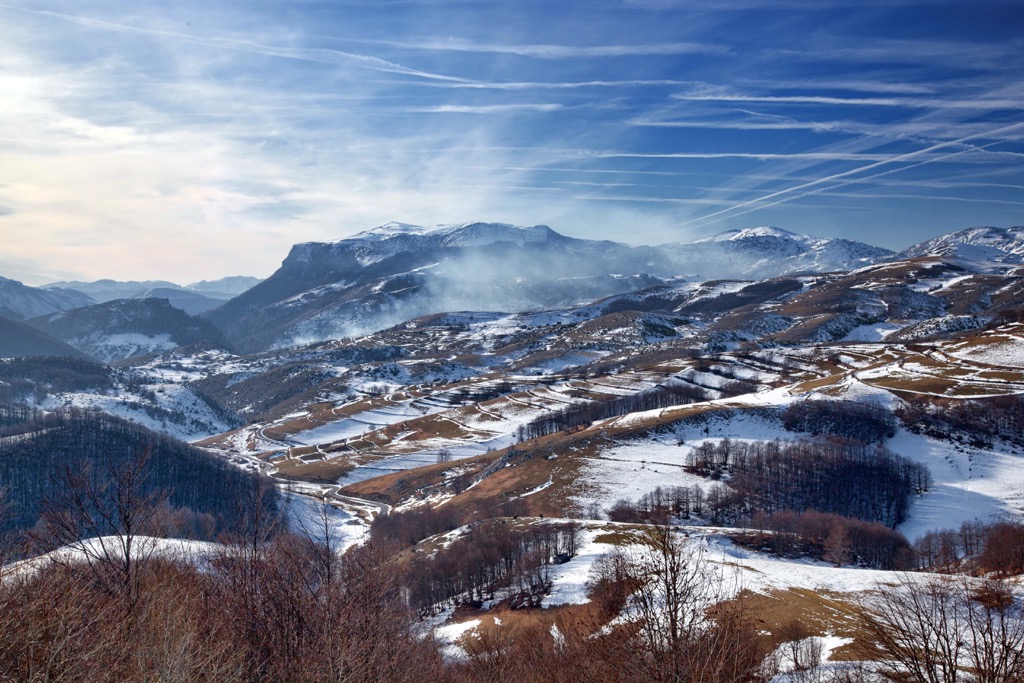
There are no protected natural areas around, but besides skiing, the site is trendy for snowshoeing and ski touring, and hiking and other outdoor activities during the rest of the year, especially the summer.
The Bjelašnica Ski Resort visitors can also go to a nearby ski resort Malo Polje-Igman for additional 3 km (1.8 mi) of slopes and 5 lifts, as well as for some new mountain panoramas, since the two resorts are only 8 km (5 mi) apart.
It’s no hassle to get to and from Bjelašnica Ski Resort.
The nearest airport to Bjelašnica Ski Resort is Sarajevo International Airport (SJJ), only 22 km (13.5 mi) away from the resort and 12 km (7.5 mi) from the city of Sarajevo.
Once there, to get to the resort, you can choose between three main transportation options: to rent a car, to take a taxi, or to use public transport.
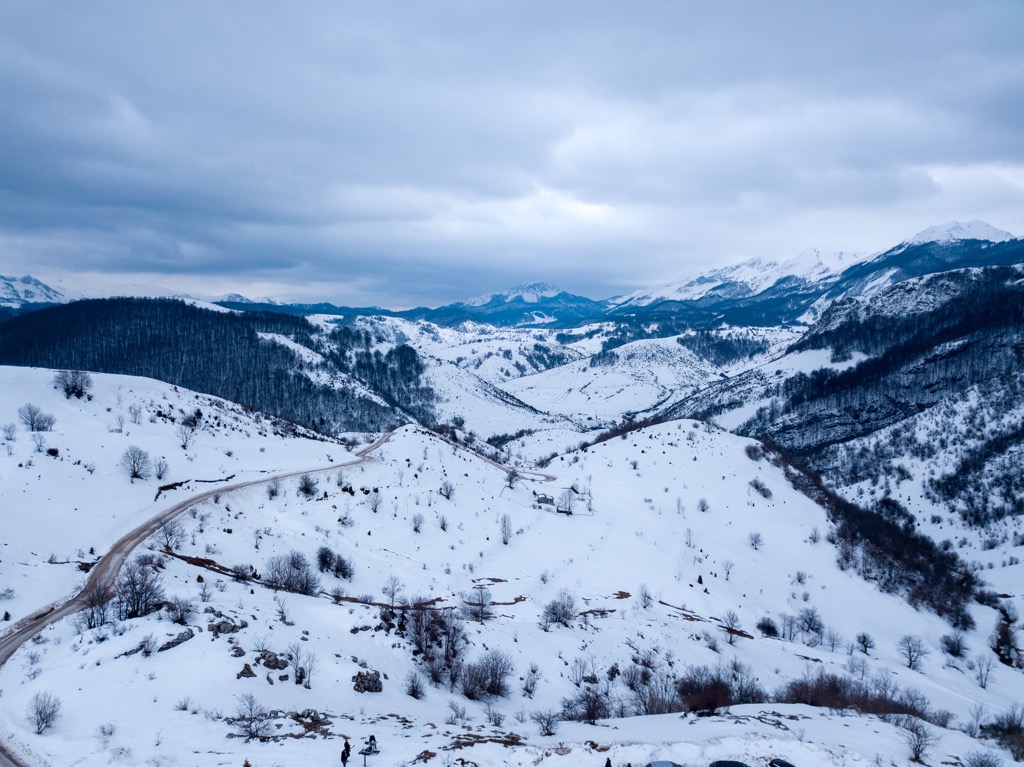
The roads to the ski resort are in great condition and will get you there fast, as well as provide enough space for parking near the base station.
If you are reaching Bjelašnica through Sarajevo or Istočno Sarajevo, a city in the Republic of Srpska, which lies to the east, the road is quite simple. Anyway, you will have to reach Sarajevo Airport and follow the main road for 5 km (3 mi) to Krupac. At Krupac, you will take a right turn and drive for 12 km (7.5 mi).
You can also reach the resort via the city of Hadžići if you are traveling from the south of the county. This road is also straightforward, and you will have to take a turn in Hadžići and in the city center drive south. The road will take you to Bjelašnica directly and with only 20 km (12 mi). This road is popular since it is more scenic and passes by Malo Polje-Igman Ski Resort.
At the resort, there is a lot of space to park your car. The daily price is about 5 Bosnian convertible marks (KM) or €2.5. The parking is around 2 min of walking away from the base station at Babin Do.
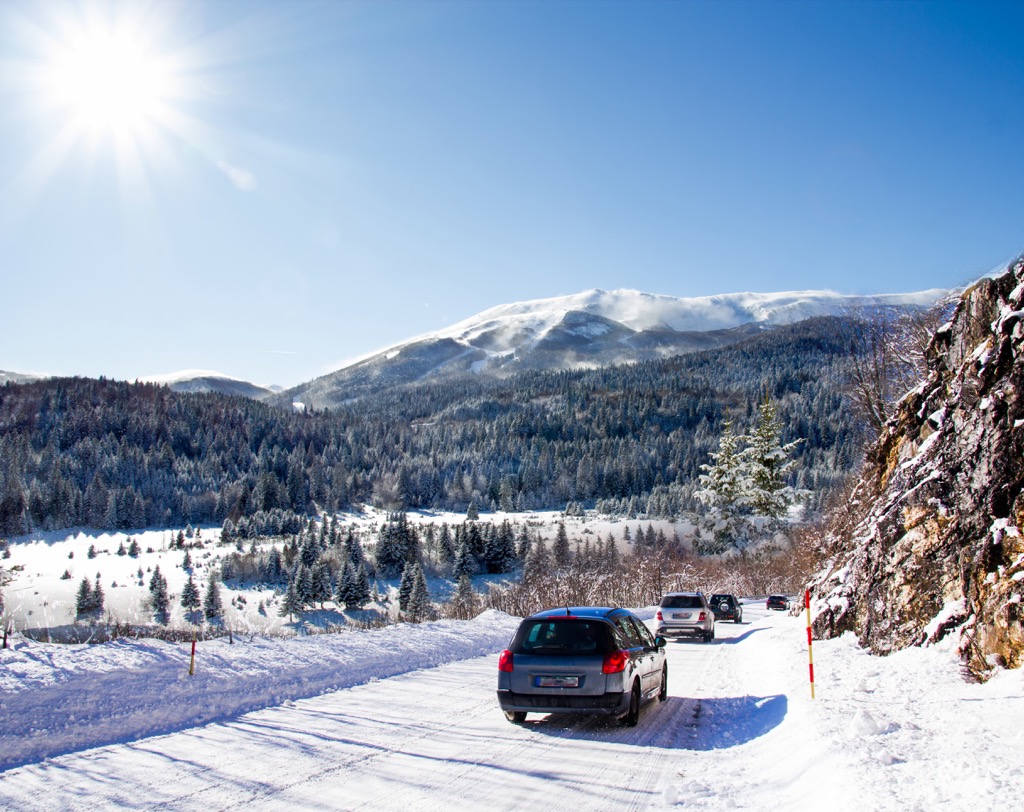
There is no official shuttle service to Bjelašnica Ski Resort from the airport or from Sarajevo but you can take a taxi. From the city that you probably want to see before you go to the resort, it costs about 40–50 KM or €20–25. To Sarajevo, you can get by the official airport shuttle from Sarajevo airport.
To get to the resort by public transportation, take the bus Ilidža — Sinanovići at the Ilidža Termina, one of Sarajevo’s bus stations to the southwest of the city center, Babin Do is a stop. The first departing bus is at 7:30 am, and the last return bus is at 4 pm. It costs 5 KM (€2.5). It operates every day. During the Christmas and New Year holidays there are also additional buses, the schedule of which you can find out at the station, as it varies depending on how many skiers want to go to the resort.
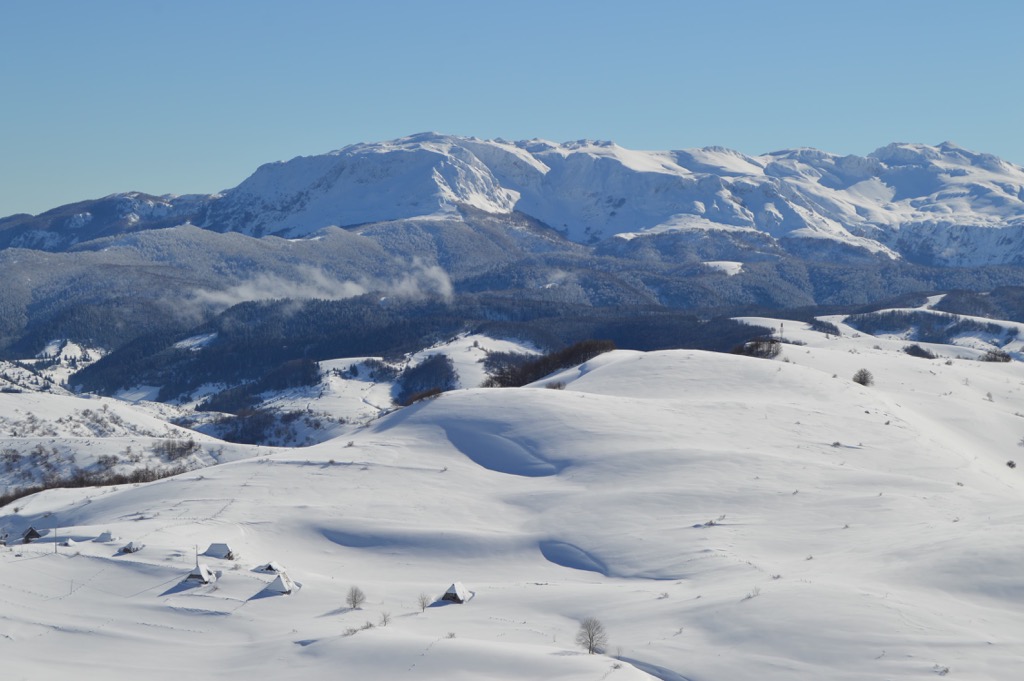
There are also no official shuttles or even public transportation between Bjelašnica and Malo Polje-Igman ski resorts.
Winter in Bjelašnica lasts from November to May, while the skiing season is generally between mid-December and early April. Due to lower snowfalls, the season can be cut, and therefore, the ski slopes can only be open closer to the New Year.
The best skiing season at Bjelašnica Ski Resort is in late January and early February, since it is guaranteed to snow on Bjelašnica mountain during this period.
The high season is early January — it is the most crowded time. The low season is between mid-January to mid-February — there are less people at the resort.
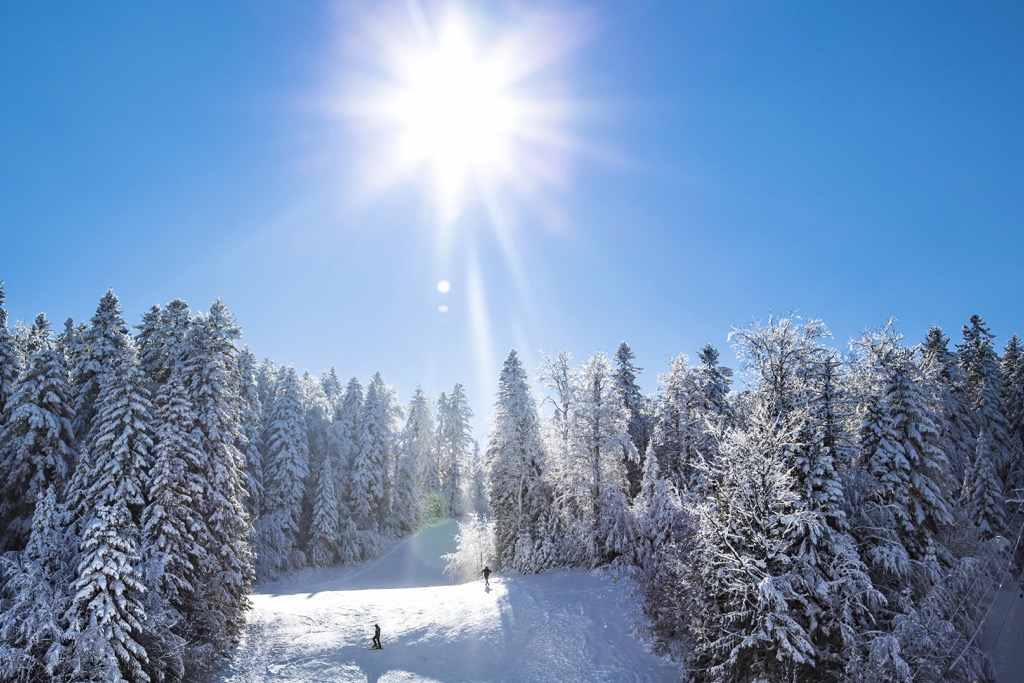
You can expect artificial snow when skiing down Bjelašnica. Almost all of the slopes are covered with snow cannons, so almost the whole resort can be skied down, even when there is less than enough snowfall.
Winter is especially interesting precisely because of the landscape offered by the mountain covered with snow, resembling a white desert bathed in the rays of the sun. A special attraction is the high snow drifts that can reach up to several meters (feet).
On Bjelašnica, there is a meteorological station, which was built in 1894. The meteorologists live on it all the time observing the weather and making the forecasts. So the mountain is also the highest permanently inhabited point in Bosnia and Herzegovina. For this reason, the peak itself is also known as Opservatorija (Observatory).
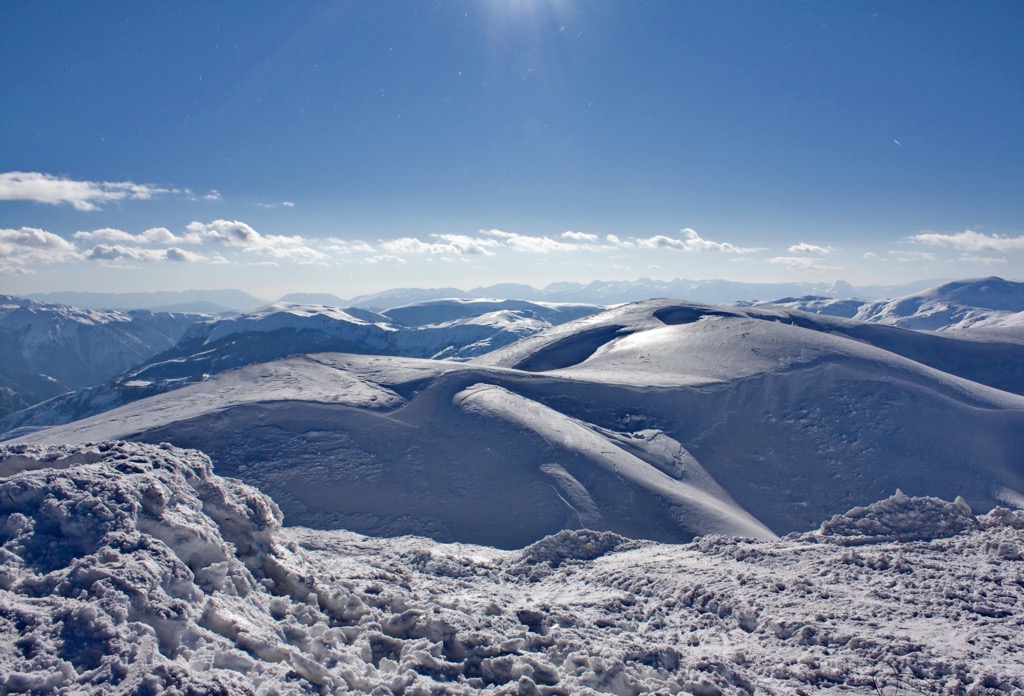
Bjelašnica is a big ski resort in terms of local standards, but compared to the rest of the world, it is quite small. It consists of only the Bjelašnica mountain. Still, the Malo Polje-Igman is nearby, and managed by the same government company ZOI 84, so in a broader sense, both Bjelašnica and Igman can be considered the same resort.
Bjelašnica Ski Resort is only divided into two parts: lower and upper. The lower part is known as Babin Do (1,250 m / 4,101 ft) and the peak is known as Bjelašnica or Opservatorija (2,067 m / 6,718 ft). Most chairlifts and slopes are in the lower part, and the highest peak of Bjelašnica hosts the upper part with one chairlift and one slope.
The resort, which is located straight down the mountain from most ski accommodations, is only a few minutes walk away. There are lots of shops and bars right by the base, so you will definitely lack nothing when visiting.
Igman Ski Resort is a small mountain with a ski resort of its own. It is particularly good for several sporting activities.
There are few places in Europe like “Veliko polje” (“Great Field”), which was a site for Nordic competitions in the Olympics. You can find around 50 km (mi) of trails for Nordic running here. For the Olympics, a jump of 70 and 90 m (229 and 295 ft) was built on the “Malo polje” (“Small Field”) but is not in use at this time.
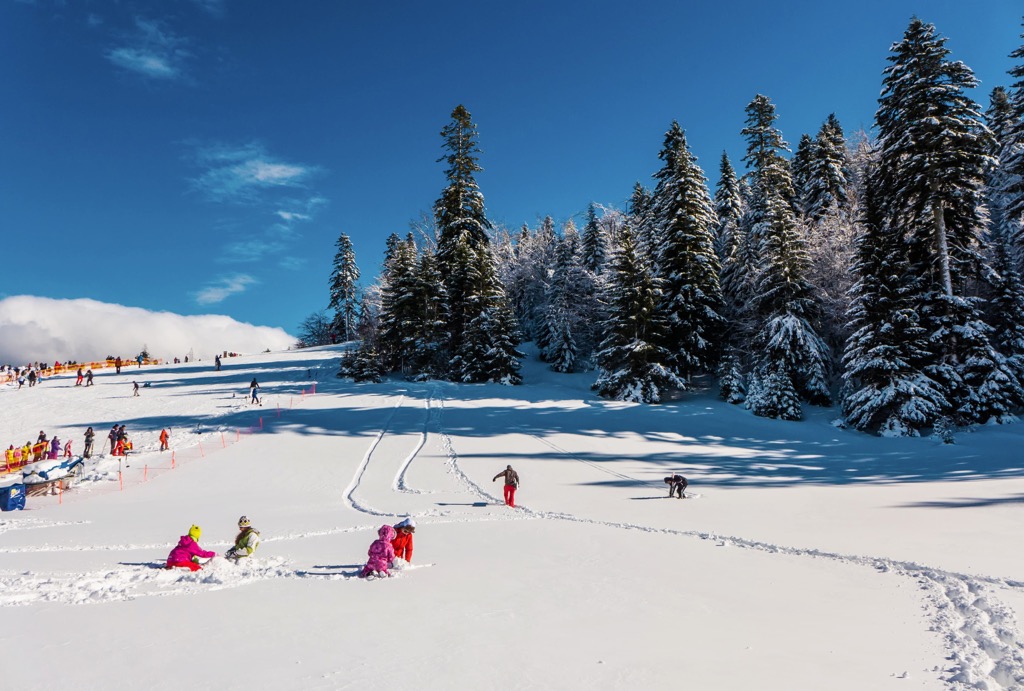
The latter is conveniently situated in a quiet and peaceful valley. This means that it has been a popular ski school for kids for many years. There are also 5 baby ski lifts, as well as 2-seat chairlifts that provide fun for older or more experienced kids. There are also six children's trails and one for adults.
The resort is also suitable for other forms of tourism, like air spa treatments.
The 1984 Winter Olympics in Sarajevo were held on the Bjelašnica and Igman mountains.
Since Bosnia and Herzegovina was part of Yugoslavia, the government wanted to prepare its mountains for the Winter Olympics fully and started building on Bjelašnica. The former Yugoslav government made great investments to accommodate the Winter Olympics. A lot of work was done in preparation for the tournament, so that good conditions existed on the Bjelašnica and Igman mountains.
This is when the road across the Igman plateau connecting Sarajevo and Babin Do, as well as Igman with Hadžići, was built, too.
So there are 14 km (8 mi) of slopes in total in the Bjelašnica Ski Resort, out of which 1.6 km (1 mi) are black or expert level — 11%, 7.8 km (4.8 mi) are intermediate level — 55%, and 4.8 km (2.9 mi) are beginner level — 34%. The longest slope is the Olimpijski (Olympic) of 2.8 km (1.7 mi).
When it comes to ski markings, the easiest are marked with blue 🔵, intermediate are marked with red 🔴 and the hardest runs are black ⚫.
Speaking of resort ski lifts, the nine of them in total are divided as follows: 3 chairlifts, and 6 T-bars.
Bjelašnica ski resort also has floodlights so that fans of night skiing can enjoy the resort. The slope has a moderate incline and is 750 m (2,460 ft) long, and it gives off very good light.
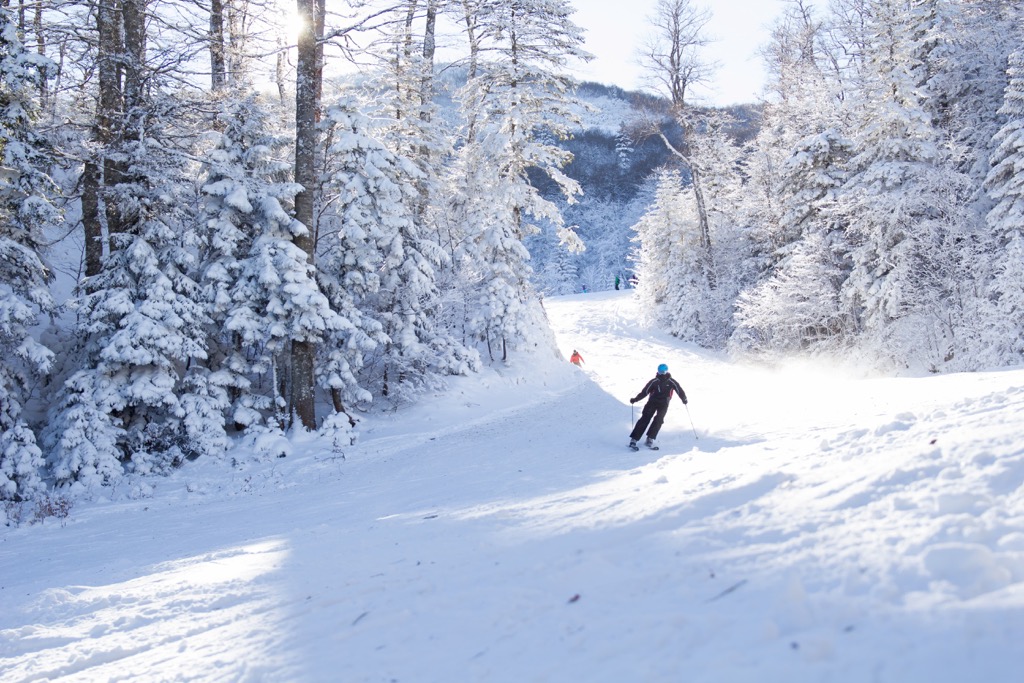
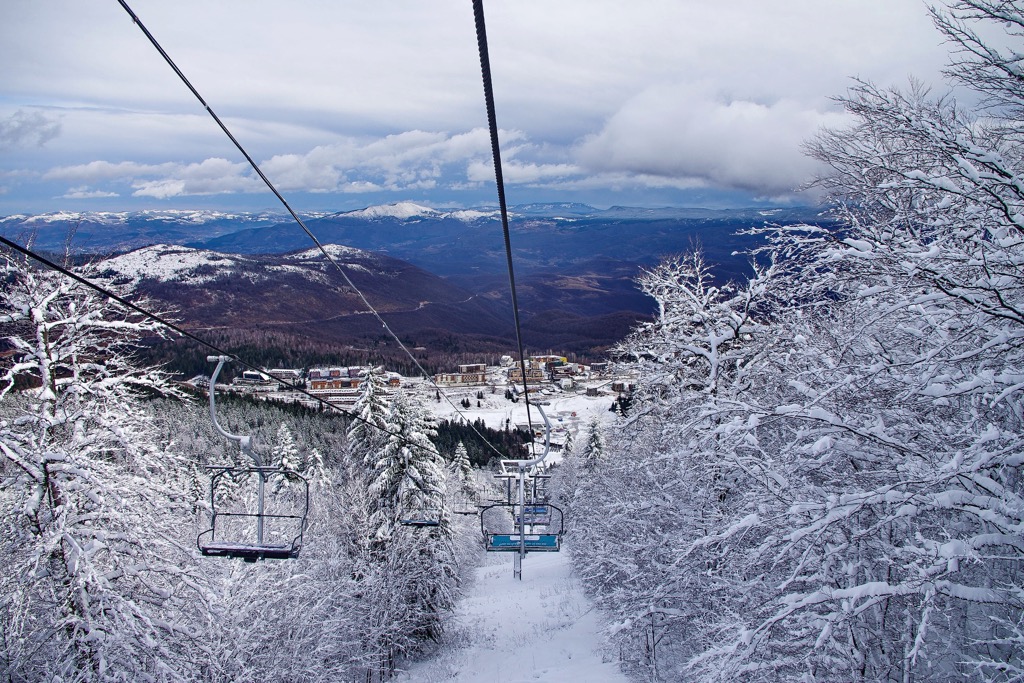
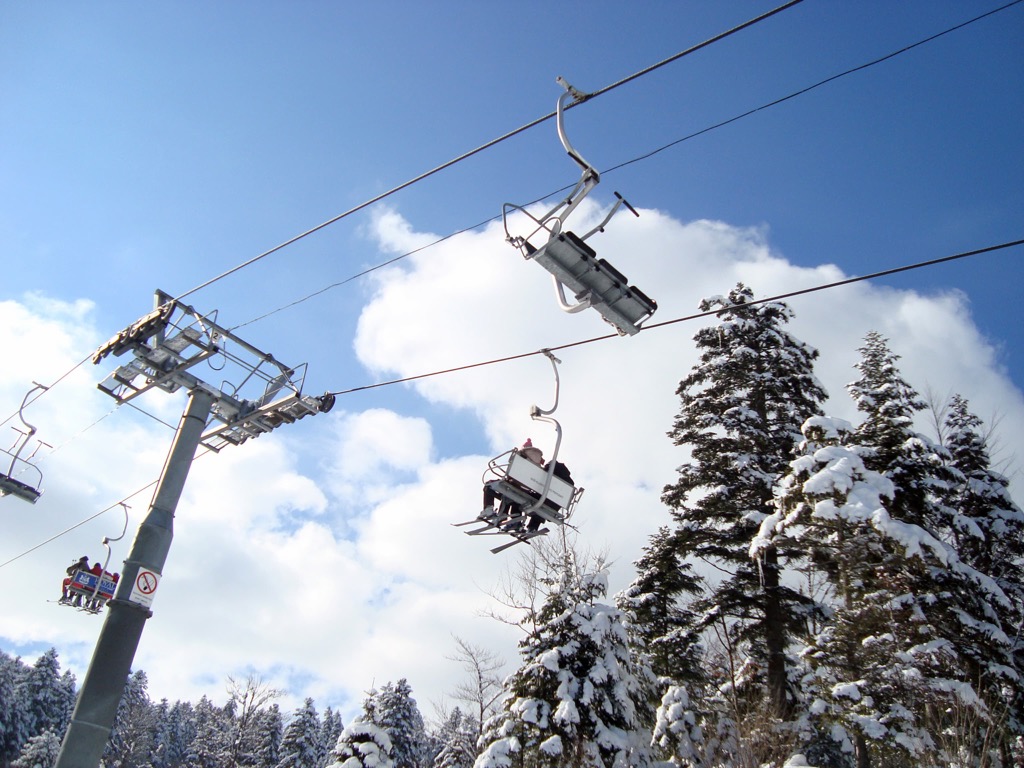
Bjelašnica can be used also for backcountry skiing, snowshoeing and ski touring.
First, once you reach the peak, you can cover the whole ridge to Mala Vlahinja (2,005 m / 6,578 ft) or Žuti Cvijet (2,026 ft / 6,646 ft) peaks on your skis or snowshoes.
Second, if you’d like to try some backcountry, you can do so from the peak as well — down the mountain to Štini Do and return to the Babin Do.
Be warned: the left side of the peak, called Kotlovi, is a very steep incline, used for ice climbing in low snow and avalanche-prone when there is snowfall, so do not attempt to ski down Kotlovi without a local guide.
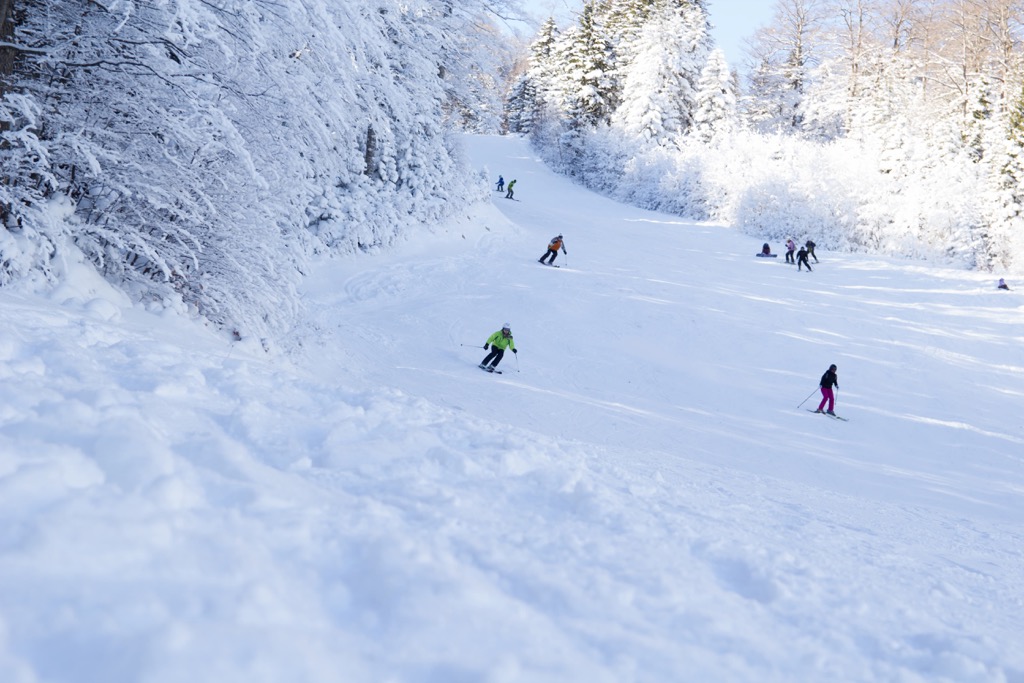
When you buy a ski pass for Bjelašnica Ski Resort, you will be able to ski both on Bjelašnica and Igman mountains. The day ski pass for adults is 42 KM (€21), for kids and teens — 28 KM (€14) and 33 KM (€17), respectively, and for seniors it is 35 KM (€18). In addition, there are also half-day passes until 11 am and 1 pm, night passes, as well as 2, 3 and 7-day passes with a progressively lower price per day of skiing.
Bjelašnica has much to offer. On the resorts you will find:
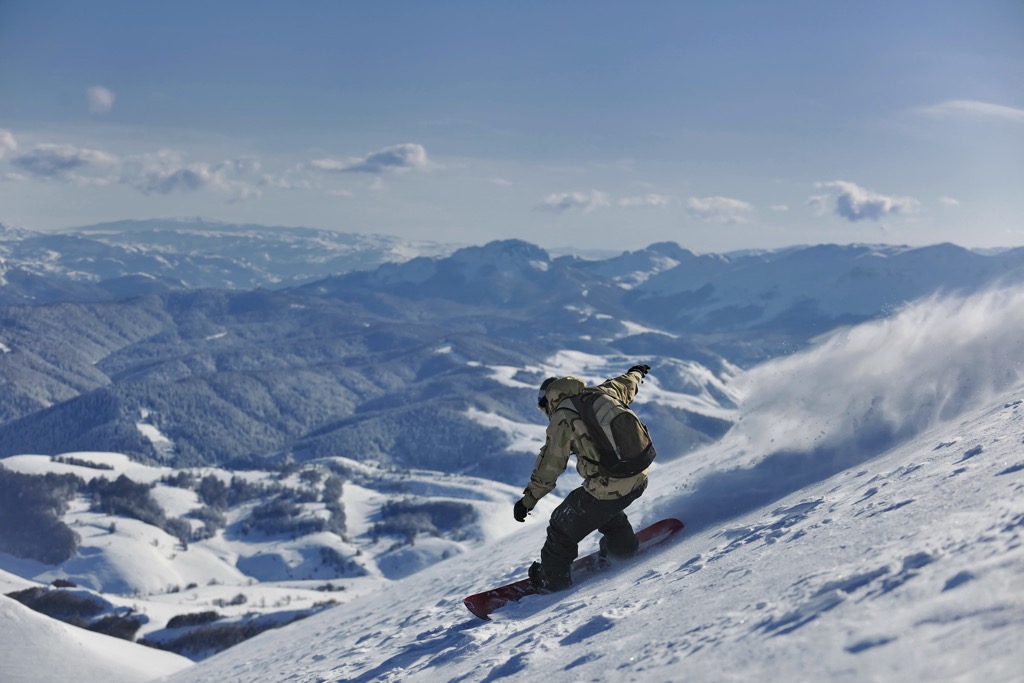
Before you go skiing, visit the resort's official tourist office for more information on the spot:
Bjelašnica Info
Babin Do bb, BIH-71000, Sarajevo, Bosnia and Herzegovina
+38733279100
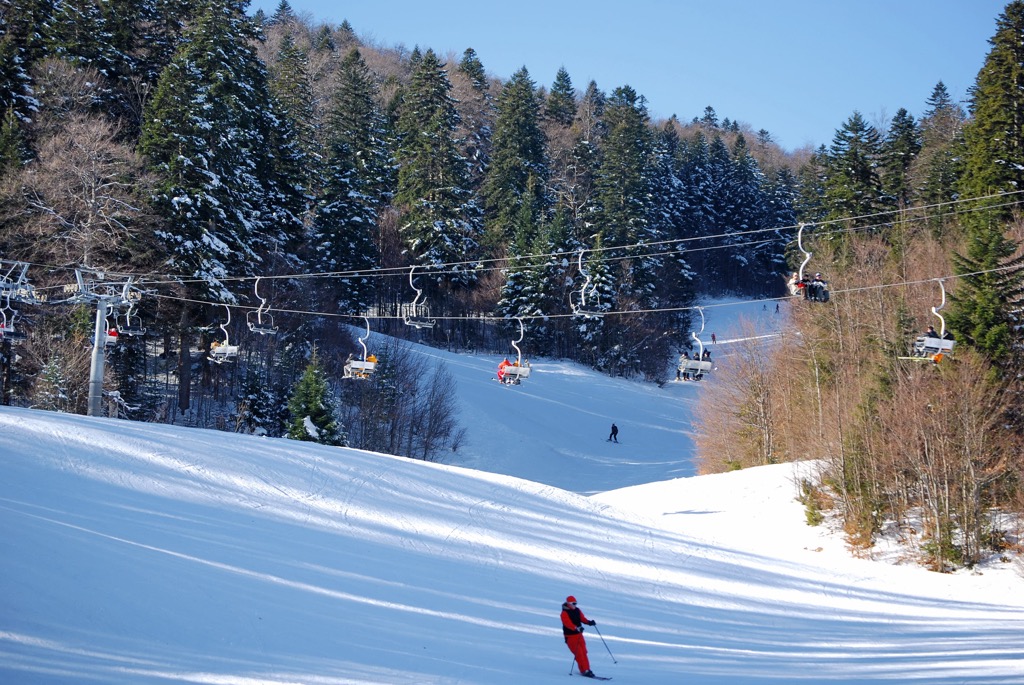
You can eat and drink at many bars and restaurants on Bjelašnica since Babin Do base is close to them. Most skiers choose either the popular Baza bar or Benetton cafe right below the chairlift entrance, and they like to grab a bite in the Hotel Han restaurant and Pirpa fast food next to the parking lot.
There are also bars on the mountain itself, so you can have a beer or a coffee right on the slopes.
If you want to save and need something cheaper compared to the prices of ready-made meals, there is a supermarket as well at Babin Do.
At Bjelašnica base, there are hotels like Han and Hotel Bjelašnica, which I just named above. This and other hotels come with a spa and hot springs, and a pool inside.
If you are not looking for a spa treatment, you can try the most popular options — apartments and homes. There are numerous apartments and rental homes you can choose from also right at the base. When talking about the best quality for price in terms of lodging, it is also the best option for families.
Another budget-friendly option is staying in a mountain hut managed by the local hiking clubs. The most popular one is Planinarski Dom Vrela below Visočica mountain.
Needless to say, one can also find accommodation near Sarajevo or inside the city as well, and travel to the slopes every day. Since this is a major metropolitan city, there are literally all kinds of accommodations.

After a whole day skiing, most skiers won’t go evening skiing but will look for events. The same Benetton cafe and Baza bar offer great After-ski options, as the term is translated from the French. They are the perfect places to unwind after a long day.
Bjelašnica is also known for its events. Every winter it hosts a festival at the beginning of the ski season. Numerous music artists perform, and locals join here to celebrate the new season starting. While this is a crowded event, it would be fun and extra cheap since the ski pass is free for all skiers who attend the event.







